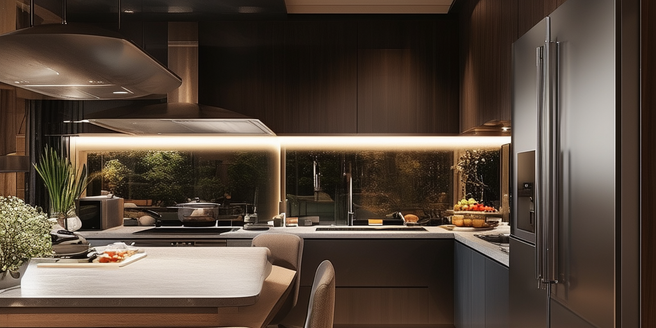Smart Home Investments

Understanding the Basics of Smart Home Technology
Smart home technology involves the use of internet-connected devices to enable remote management and monitoring of various home systems. From lighting and heating to security and entertainment, these devices communicate with each other to create a more efficient, secure, and comfortable living environment. Understanding the basics of smart home technology is essential for anyone looking to invest in these systems. These technologies not only enhance convenience but also contribute to energy savings. Moreover, they provide peace of mind by allowing users to monitor their homes from anywhere in the world. With the growing popularity of smart homes, staying updated on the latest advancements is also beneficial. Key components often include smart hubs, lighting, thermostats, and security systems. The interoperability between these devices is crucial for seamless integration and functionality.
Top Smart Home Devices to Consider
When considering smart home devices, it’s essential to select ones that best suit your needs and budget. Key devices include smart thermostats for climate control, smart lights for energy efficiency, and smart locks for enhanced security. Other popular choices include video doorbells, voice-activated assistants, and smart speakers. These devices not only make your life more convenient but also add a layer of security and energy savings to your home. Additionally, reading customer reviews can provide valuable insights into the performance of these gadgets. With the ever-evolving technology, staying updated on the latest features can greatly benefit your smart home ecosystem. Proper installation is equally important to ensure that devices function optimally. Doing thorough research on product compatibility and features will ensure that you make informed decisions.
Cost vs. Benefit: Is a Smart Home Worth It?
Investing in a smart home involves weighing the costs against the potential benefits. While initial setup costs can be high, the long-term savings on energy bills and increased home security can outweigh these expenses. Smart thermostats, for example, optimize heating and cooling, leading to reduced energy consumption. Additionally, many smart home devices are designed to integrate seamlessly with each other, creating a more efficient and cohesive system. These devices can be controlled remotely, adding an extra layer of convenience. Moreover, smart security systems provide peace of mind and can lower insurance premiums. The convenience and comfort added by smart home devices often justify the costs, making them a worthwhile investment for many homeowners.
Integrating Smart Technology: Step-by-Step Guide
Successfully integrating smart technology into your home involves a few key steps. First, assess your needs and choose devices that align with your lifestyle. Keep in mind that starting small can help you gradually adapt to new technology. Next, ensure compatibility between devices and a reliable home Wi-Fi network. Start with a central hub or smart speaker that can control multiple devices. Don’t forget to explore energy-efficient options that can save you money in the long run. It’s helpful to research user reviews and expert recommendations before making a purchase. Follow installation guides carefully or consider professional setup for complex systems. Finally, regularly update device firmware and utilize security features to protect your smart home ecosystem from potential threats.
Future Trends in Smart Home Innovations
The future of smart home technology is evolving rapidly, with innovations aimed at enhancing convenience, security, and energy efficiency. Upcoming trends include advanced AI integration, more intuitive voice control, and improved interoperability between devices. One notable development is the rise of smart appliances that learn your habits to optimize their performance. Additionally, new materials and designs are being introduced to seamlessly integrate smart technology into home aesthetics. Sustainable technology, such as smart grids and energy storage systems, will play a significant role in creating eco-friendly homes. Enhanced data privacy measures and cybersecurity protocols will also be crucial as the number of connected devices continues to grow. Staying informed about these trends can help you make smarter investment decisions for your home.